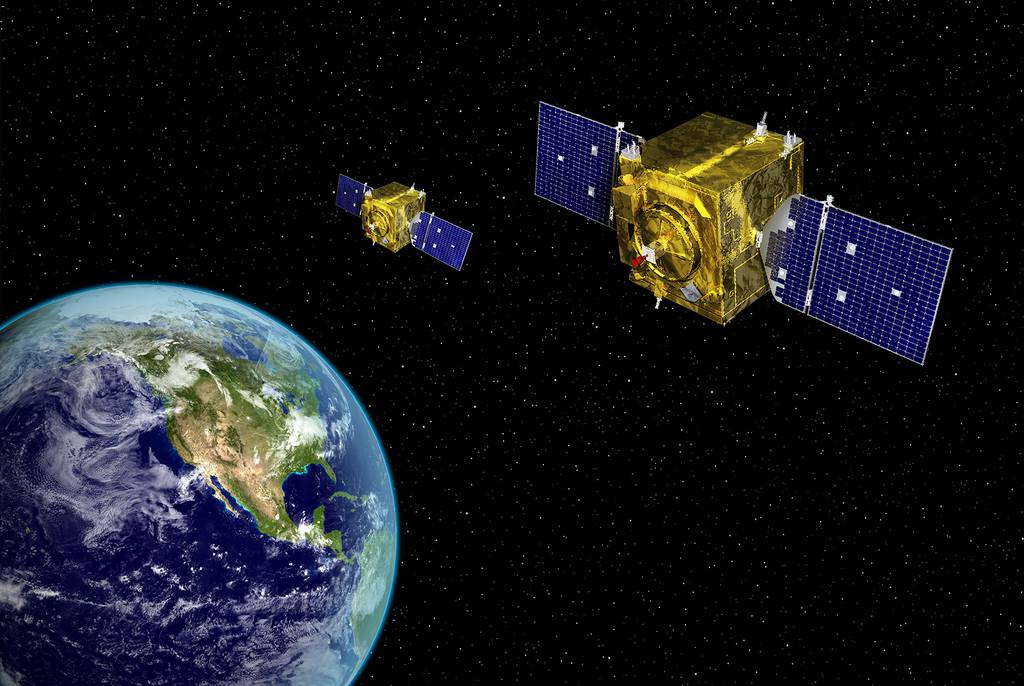WASHINGTON — The U.S. Space Force just launched two new space domain awareness satellites, expanding the capability of its Geosynchronous Space Situational Awareness Program and boosting the accuracy of the service’s on-orbit tracking constellation.
The Northrop Grumman-built satellites launched Jan. 21 from Cape Canaveral Space Force Station, Florida, flying on a United Launch Alliance Atlas V rocket.
With this launch, the Space Force will have six Geosynchronous Space Situational Awareness Program (GSSAP) space vehicles on orbit, the first of which launched in 2014 to provide what Chief of Space Operations Gen. John Raymond calls a “neighborhood watch†function. Operating in geosynchronous Earth orbit more than 22,000 miles above the earth’s surface, the satellites track other space objects and feed that data to the Space Surveillance Network. They also perform rendezvous and proximity operations, drawing close to other satellites to observe and provide data on them.
Lt. Gen. Stephen Whiting, commander of Space Operations Command, said in a press release Thursday the GSSAP system is a “key piece in the puzzle for space domain awareness.â€
“The first four GSSAP satellites have performed remarkably well,†Whiting said. “These two new satellites will add to that capability and enable us to understand more completely things that occur in the geosynchronous orbit.â€
The service has been somewhat vague on GSSAP’s full suite of capabilities and has not released details on the value of its contract with Northrop Grumman. Asked this week during a Mitchell Institute event whether the two new satellites are more capable than those already on orbit, Raymond offered only that they would provide “additional capacity.â€
“This neighborhood watch capability has provided us a fuller look at what’s in space, specifically in the geosynchronous domain,†he said. “It’s important for our operations, and it’s going to be really important as we move forward.â€
The Space Force requested funding for five National Security Space Launches in fiscal 2022 and three in fiscal 2021. Raymond has warned in recent weeks that if a budget deal isn’t reached soon and the service is required to operate under a long-term continuing resolution at fiscal 2021 funding levels, it may have to delay two of those launches.
And because the Space Force buys its launches two years in advance — which means the missions the service planned to buy in fiscal 2022 would presumably launch in 2024 – delaying launch procurements today could affect the manifest for future launches.
“That would have a ripple effect because those two then shift another two,†Raymond said. “And so, it’s more than just a one-year impact. It would have a ripple effect for years to come.â€
The launch procurement issue could also have implications for the Space Development Agency, which had planned to procure its Tranche 1 launch services this year for a 2025 target launch date. Speaking last week during a Mitchell Institute event, Tournear said because that procurement is considered a new start in fiscal 2022, an ongoing CR could hold up funding and potentially the launch schedule for Tranche 1.
Courtney Albon is C4ISRNET’s space and emerging technology reporter. She has covered the U.S. military since 2012, with a focus on the Air Force and Space Force. She has reported on some of the Defense Department’s most significant acquisition, budget and policy challenges.








